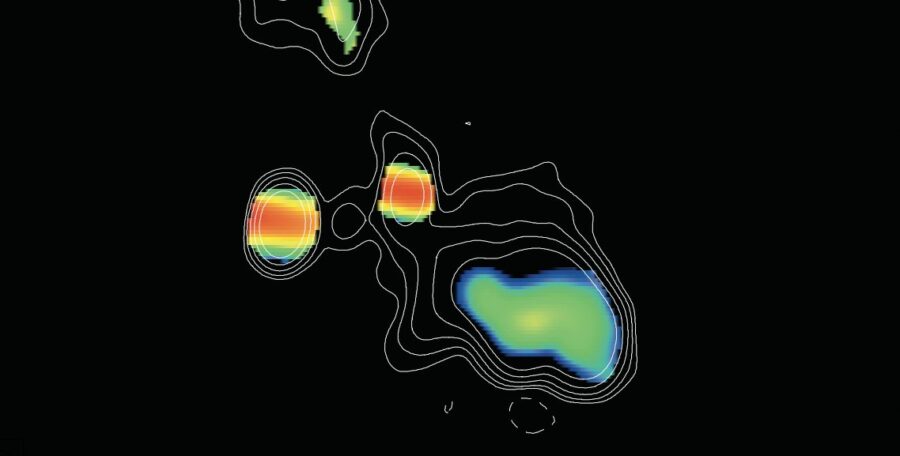A team of researchers led by Caltech has shed new light on a mysterious class of galaxies known as Compact Symmetric Objects (CSOs).
These active galaxies, which host supermassive black holes at their cores, have long puzzled astronomers due to their unique characteristics. The team’s findings, reported in three separate papers in The Astrophysical Journal, suggest that CSOs are not young, as previously believed, but rather lead relatively short lives compared to other galaxies with more extensive jets.
Anthony (Tony) Readhead, the Robinson Professor of Astronomy, Emeritus, who led the investigation, explains, “These CSOs are not young. You wouldn’t call a 12-year-old dog young even though it has lived a shorter life than an adult human. These objects are a distinct species all of their own that live and die out in thousands of years rather than the millions of years that are common in galaxies with bigger jets.”
The team reviewed literature and past observations of more than 3,000 CSO candidates, verifying 64 as real and identifying an additional 15 CSOs. These objects had been previously observed by the National Radio Astronomy Observatory’s Very Long Baseline Array (VLBA) and other high-resolution radio telescopes. “The VLBA observations are the most detailed in astronomy, providing images with details equivalent to measuring the width of a human hair at a distance of 100 miles,” Readhead says.
The analysis concludes that CSOs expel jets for 5,000 years or less before dying out. Vikram Ravi, assistant professor of astronomy at Caltech and a co-author of one of the studies, notes, “The CSO jets are very energetic jets but they seem to shut off. The jets stop flowing from the source.”
The scientists believe that a tidal disruption event (TDE), which occurs when a single star wanders too close to a supermassive black hole and is devoured, may be fueling the short-lived jets. “We think that a single star gets ripped apart, and then all that energy is channeled into jets along the axis the black hole is spinning around,” Readhead says. “The giant black hole starts out invisible to us, and then when it consumes a star, boom! The black hole has fuel, and we can see it.”
Readhead first suspected that CSOs might be fueled by TDEs back in the 1990s, but the idea went largely unnoticed due to a lack of observational evidence at the time. In 2020, he decided to revisit the topic with his colleagues, and they began combing through literature to identify real CSOs.
The team’s findings suggest that CSOs are an entirely distinct family with jets that die out much sooner than their gigantic counterparts, such as those of the galaxy Cygnus A. CSO jets extend to about 1,500 light-years at most and die out by about 5,000 years, while Cygnus A’s jets stretch to distances of about 230,000 light-years in each direction and last tens of millions of years.
The astronomers believe that the CSO jets likely form when a supermassive black hole consumes a substantial star. “The TDEs we’ve previously seen only lasted for a few years,” Ravi says. “We think that the remarkable TDEs powering CSOs last far longer because the disrupted stars are very large in size, very massive, or both.”
By analyzing the varied collection of CSO radio images, the researchers can trace how the objects age over time, almost like looking at a photo album of a CSO’s life. The younger CSOs have shorter jets closer to the black holes, while the older objects have jets that extend further out. Though most of the jets die out, the scientists estimate that one in 100 will go on to become long-lived like those of Cygnus A, likely due to galaxy mergers that provide a large quantity of fuel.
If confirmed with additional observations, the discoveries of Readhead and his team will provide a whole new avenue for studying how massive stars at the centers of galaxies interact with supermassive black holes. “These objects are indeed a distinct population with their own distinct origin, and it is up to us now to learn more about them and how they came to be,” Readhead says. “Being able to study these objects on timescales of years to decades rather than millions of years has opened the door to a whole new laboratory for studying supermassive black holes and the many unexpected and unpredictable surprises they hold.”


